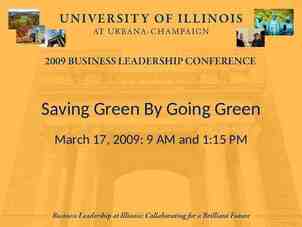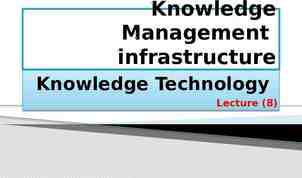Maharshi Dayanand Saraswati University Ajmer E- Content Learning
15 Slides122.97 KB

Maharshi Dayanand Saraswati University Ajmer E- Content Learning Lecture Community Nutrition Industrial Waste Offencce Dr. Namita S. Moyal Department of Food Science and Nutrition

What is Industrial Pollution? With the coming of the Industrial Revolution, humans were able to advance further into the 21st century. Technology developed rapidly, science became advanced and the manufacturing age came into view. With all of these came one more effect, industrial pollution. Earlier, industries were small factories that produced smoke as the main pollutant. However, since the number of factories were limited and worked only a certain number of hours a day, the levels of pollution did not grow significantly. But when these factories became full-scale industries and manufacturing units, the issue of industrial pollution started to take on more importance

Any form of pollution that can trace its immediate source to industrial practices is known as industrial pollution. Most of the pollution on the planet can be traced back to industries of some kind. In fact, the issue of industrial pollution has taken on grave importance for agencies trying to fight against environmental degradation. Countries facing sudden and rapid growth of such industries are finding it to be a serious problem which has to be brought under control immediately. Industrial pollution takes on many faces. It contaminates many sources of drinking water, releases unwanted toxins into the air and reduces the quality of soil all over the world. Major environmental disasters have been caused due to industrial mishaps, which have yet to be brought under control. Below are a few of the causes of industrial pollution that have resulted in environmental degradation.

Industrial waste Industrial waste is the waste produced by industrial activity which includes any material that is rendered useless during a manufacturing process such as that of factories, industries, mills, and mining operations. Types of industrial waste include dirt and gravel, masonry and concrete, scrap metal, oil, solvents, chemicals, scrap lumber, even vegetable matter from restaurants. Industrial waste may be solid, liquid or gaseous. It may be hazardous or non-hazardous waste. Hazardous waste may be toxic, ignitable, corrosive, reactive, or radioactive. Industrial waste may pollute the air, the soil, or nearby water sources, eventually ending up in the sea. Industrial waste is often mixed into municipal waste, making accurate assessments difficult. Most countries have enacted legislation to deal with the problem of industrial waste, but strictness and compliance regimes vary. Enforcement is always an issue.

Classification and treatment Toxic waste/Hazardous waste, chemical waste, industrial solid waste and municipal solid waste are designations of industrial wastes. Sewage treatment plants can treat some industrial wastes, i.e. those consisting of conventional pollutants such as biochemical oxygen demand (BOD). Industrial wastes containing toxic pollutants or high concentrations of other pollutants (such as ammonia) require specialized treatment systems. Industrial wastes can be classified on the basis of their characteristics: Waste in solid form, but some pollutants within are in liquid or fluid form, e.g. crockery industry or washing of minerals or coal e liquid form, e.g. dairy industry

Causes of Industrial Pollution 1. Lack of Policies to Control Pollution: Lack of effective policies and poor enforcement drive allowed many industries to bypass laws made by the pollution control board which resulted in mass scale pollution that affected the lives of many people. 2. Unplanned Industrial Growth In most industrial townships, unplanned growth took place wherein those companies flouted rules and norms and polluted the environment with both air and water pollution. 3. Use of Outdated Technologies Most industries still rely on old technologies to produce products that generate a large amount of waste. To avoid high cost and expenditure, many companies still make use of traditional technologies to produce high-end products

4. Presence of a Large Number of Small Scale Industries Many small scale industries and factories that don’t have enough capital and rely on government grants to run their day-to-day businesses often escape environment regulations and release a large number of toxic gases in the atmosphere. 5. Inefficient Waste Disposal Water pollution and soil pollution are often caused directly due to inefficiency in the disposal of waste. Long term exposure to polluted air and water causes chronic health problems, making the issue of industrial pollution into a severe one. It also lowers the air quality in surrounding areas which causes many respiratory disorders. 6. Leaching of Resources From Our Natural World Industries do require a large amount of raw material to make them into finished products. This requires the extraction of minerals from beneath the earth. The extracted minerals can cause soil pollution when spilled on the earth. Leaks from vessels can cause oil spills that may prove harmful for marine life.

Environmental Impact Factories and power plants are typically located near bodies of water due to the need for large amounts of water as an input to the manufacturing process, or for equipment cooling. Many areas that are becoming industrialized do not yet have the resources or technology to dispose off the waste with lesser effects on the environment. Both untreated and partially treated wastewater are commonly fed back into a near lying body of water. Metals, chemicals and sewage released into bodies of water directly affect marine ecosystems and the health of those who depend on the waters as food or drinking water sources. Toxins from the wastewater can kill off marine life or cause varying degrees of illness to those who consume these marine animals, depending on the contaminant. Metals and chemicals released into bodies of water affect the marine ecosystems. Effective manners in properly removing waste . Wastewater containing nitrates and phosphates often causes eutrophication which can kill off existing life in the water. A Thailand study focusing on water pollution origins found that the highest concentrations

1.Air Pollution Another obvious effect of industrial waste is air pollution resulting from fossil fuel burning. This affects the lives of many people because this spreads illnesses. Over time, this issue that has been widespread. Several environmental issues have a devastating effect on third world countries because they don't have sufficient resources to solve this particular issue. This also effects the quality of soil because farmers have to try and deal with this massive issue. In addition, nitrogen dioxide is a common air pollutant found in the air. Air pollutants have a devastating effect on the human population because it causes sicknesses. Ammonia also causes a lot of respiratory problems that can be contracted from the air. "Illnesses that can occur from air pollution range from irritation to eyes, skin, nose, or throat. There is also a chance to get Pneumonia or Bronchitis both being very dangerous. Commonly, people have reported to have gotten headaches, nauseam and dizziness from air pollution. The WHO or The World Health Organization has stated that air pollution is the worst risk in terms of human health. Air pollution has been around for a long time. Indoor air pollution is also risk for humans.

2.Water pollution One of the most devastating effects of industrial waste is water pollution. For most industrial processes, heavy amount of water is used which comes in contact with harmful chemicals. These chemicals are usually metals or radioactive material. This heavily effects the environment because most of waste ends up in oceans, lakes, or rivers. As a result, water becomes polluted posing as health hazard to everyone. Farmers rely on this water but if the water is polluted, then crops that are produced can become polluted. These effect the health of society because if industrial companies can't clean up their waste, this begins to affect the life of humans but also animals.

The effects of industrial pollution are far-reaching and liable to affect the ecosystem for many years to come. Most industries require large amounts of water for their work. When involved in a series of processes, the water comes into contact with heavy metals, harmful chemicals, radioactive waste, and even organic sludge. These are either dumped into open oceans or rivers. As a result, many of our water sources have a high amount of industrial waste in them which seriously impacts the health of our ecosystem. The same water is then used by farmers for irrigation purpose which affects the quality of food that is produced. Water pollution has already rendered many groundwater resources useless for humans and wildlife. It can at best be recycled for further usage in industries.

3. Soil Pollution Soil pollution is creating problems in agriculture and destroying local vegetation. It also causes chronic health issues to the people which come in contact with such soil.

4. Wildlife Extinction By and large, the issue of industrial pollution shows us that it causes natural rhythms and patterns to fail, meaning that the wildlife is getting affected in a severe manner. Habitats are being lost, species are becoming extinct and it is harder for the environment to recover from each natural disaster. Major industrial accidents like oil spills, fires, the leak of radioactive material and damage to property are harder to cleanup as they have a higher impact

5. Global Warming With the rise in industrial pollution, global warming has been increasing at a steady pace. Smoke and greenhouse gases are being released by industries into the air which causes an increase in global warming. Melting of glaciers, extinction of polar bears, floods, tsunamis, hurricanes are few of the effects of global warming. The issue of industrial pollution concerns every nation on the planet. As a result, many steps have been taken to seek permanent solutions to the problem. Better technology is being developed for the disposal of waste and recycling as much polluted water in the industries as possible. Organic methods are being used to clean the water and soil, such as using microbes that naturally use heavy metals and waste as feed. Policies are being pushed into place to prevent further misuse of land. However, industrial pollution is still rampant and will take many years to be brought under control

THANK YOU






